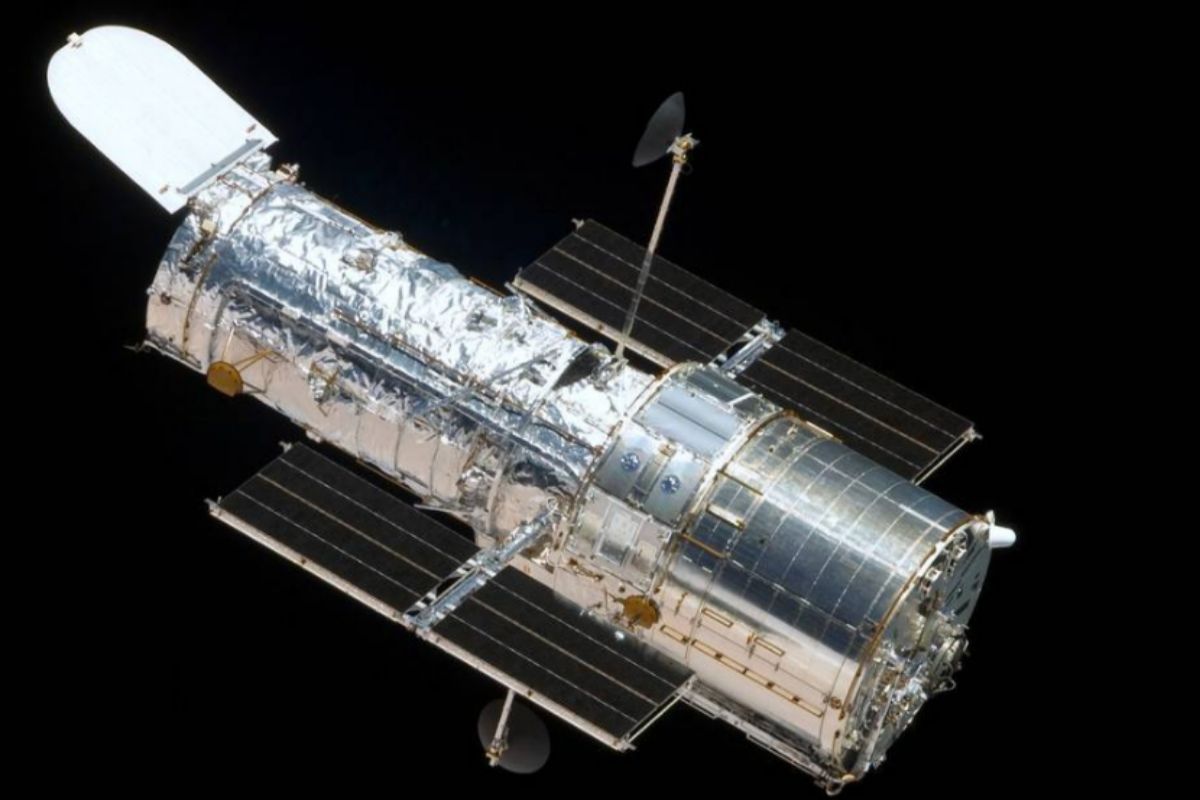TERESA GUERRERO
@teresaguerrerof
Madrid
Updated Sunday, April 26, 2020 - 16:07
- Share on Facebook
- Share on Twitter
- Send by email
- Anniversary. The telescope that changed our view of the cosmos
- From Hubble. Astronomers choose their favorite images
Choosing from the spectacular images taken by Hubble is difficult. On the 30th anniversary of its launch, NASA has released an unpublished snapshot. He has named it Cosmic Reef because it reminds us of a scene that could well take place at the bottom of the sea. It does, however, show a turbulent star nursery located far away from us, 163,000 light-years away, in a neighboring galaxy, the Large Magellanic Cloud.
On the right, the great reddish mass is the giant nebula NGC 2014. On the left and in blue we see its neighbor NGC 2020. They are illuminated by the brightness of young stars that are more massive than our sun, at least 10 times more , and that they were born a few million years ago (compared to the 10 billion years of the Sun).
This cosmic reef is one of many star nurseries portrayed over 30 years by this telescope named after the American astronomer Edwin Hubble (1889-1953).
A location without interference
The Hubble telescope , a NASA project that has had significant participation from the European Space Agency (ESA), was launched from Cape Canaveral on April 24, 1990. Located about 550 km from Earth, it has been able to photograph and study the cosmos without the interference of terrestrial telescopes.
"Hubble is still operational and we expect it to continue working for another five or 10 years," Günter Hasinger, director of Science at the European Space Agency (ESA), told THE WORLD. That is why the German scientist is confident that he can work together with the future James Webb space telescope , the great astronomical project of recent years that has suffered several delays and increases in its budget - its current cost is around 8,000 million dollars. -.
The plan is for this sophisticated telescope, which will carry a 6.5-meter mirror (compared to 2.4 meters for the Hubble main mirror ) and which also involves ESA and Canada, to be launched in 2021.
For Hasinger, Hubble "was a huge transformation for astronomy" , and not just because "it was able to capture sharp images" of the universe for the first time, much more powerful than those obtained with other technologies. "It has created a new generation of astronomers and has been an example for many other projects; all observatories have learned of the way Hubble's science and data are distributed ." Every week it sends about 150 gigabits of data to Earth.
From disappointment to success
The Hubble measures 13.3 meters in length, a size equivalent to a bus, and moves at a speed of about 27,300 kilometers per hour, so it takes 95 minutes to circle Earth. From that position, he has studied distant galaxies, stars, and all kinds of planets.
The distance he works made it possible for space agencies to send astronauts to fix it and renew their equipment, allowing him to work for so many years. And it is that although thanks to him the most detailed images of the universe have been obtained, the beginnings of his space journey were very disappointing.
During the first tests it was found that the images he was taking were not sharp, something that was due to the fact that his primary mirror did not have the proper curvature due to a manufacturing failure. Until 1993, when a team of astronauts aboard the shuttle Endeavor fixed the problem by installing an instrument to correct that defect, Hubble was unable to operate as expected.
In 2009, seven astronauts completed a complex mission that required a series of complicated maneuvers to repair the telescope and install a new spectrometer so they could study the properties of distant galaxies. Those emergency repairs will not be possible on the James Webb , at least with the technology that is currently available because the telescope is scheduled to work one and a half million kilometers from Earth.
According to the criteria of The Trust Project
Know more- Science and health
- science
Astrophysics Findings and puzzles about Oumuamua and 2I / Borisov, the only two known interstellar objects
ObituaryDies astrophysicist Reimar Lüst, pioneer of space in Europe and director of ESA in the 1980s
Covid-19A breathing system to prevent the spread of coronavirus to health workers

